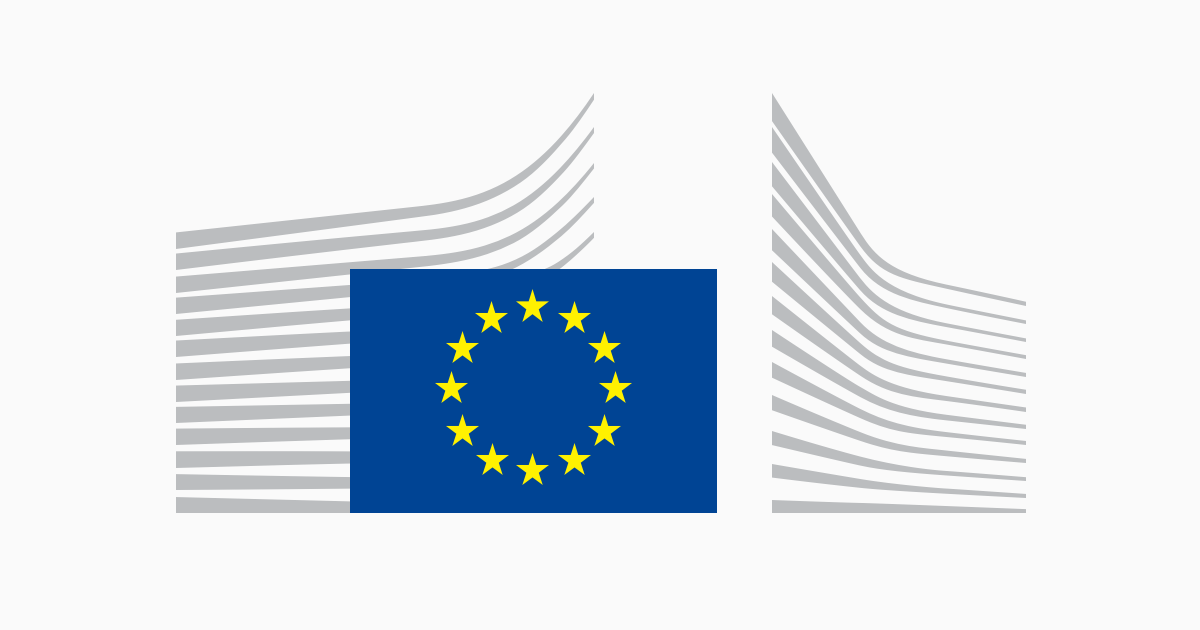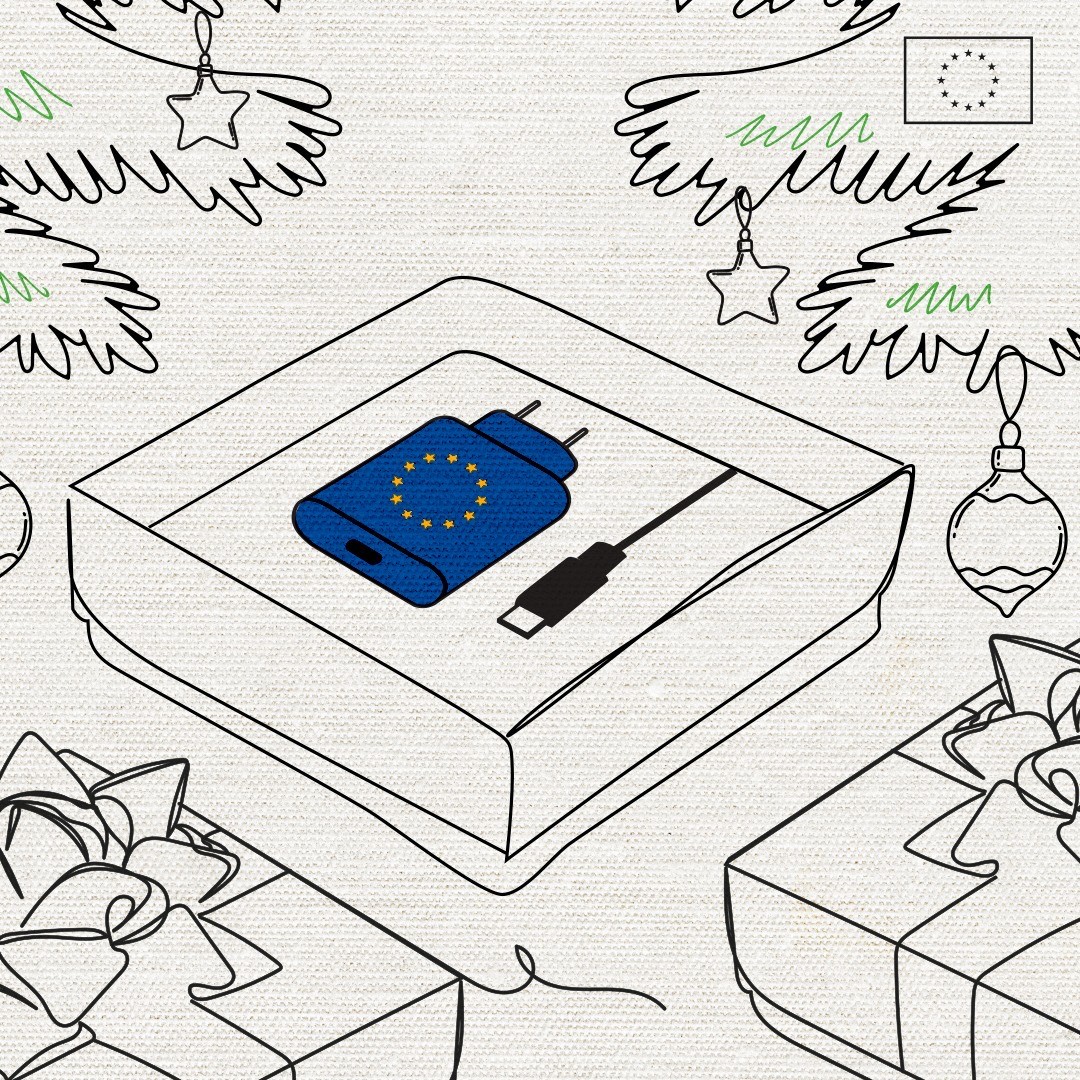- cross-posted to:
- [email protected]
- [email protected]
- cross-posted to:
- [email protected]
- [email protected]
cross-posted from: https://jlai.lu/post/3226934
The wait is finally over. From 2024, USB-C will be the common standard for electronic devices in the EU – and we have already seen the impact !
It means
- 🔌The same charger for all phones, tablets and cameras
- ⚡ Harmonised fast-charging technology
- 🔄Reduced e-waste
One charger to rule them all.
Now, a reality.
Learn more about the #EUCommonCharger here: https://europa.eu/!hwjj3G
Unbundling the sale of a charger from the sale of the electronic device .
The ‘common charging’ requirements will apply to all handheld mobile phones, tablets, digital cameras, headphones, headsets, portable speakers, handheld videogame consoles, e-readers, earbuds, keyboards, mice, and portable navigation systems as of 2024. These requirements will also apply to laptops as of 2026. Such transition periods will give industry sufficient time to adapt before the entry into application.
Consumers will be able to purchase a new electronic device without a new charger. This will limit the number of chargers on the market or left unused. Reducing production and disposal of new chargers is estimated to reduce the amount of electronic waste by 980 tonnes yearly
Producers will need to provide relevant visual and written information about charging characteristics, including information on the power the device requires and whether it supports fast charging. This will help consumers understand if their existing chargers meet their new device’s requirements and/or help them select a compatible charger. Combined with the other measures, this will help consumers to limit the number of new chargers purchased and save at least €250 million a year on unnecessary charger purchases.
L’attente est finalement terminée. À partir de 2024, l’USB-C deviendra la norme commune pour les appareils électroniques dans l’UE – et nous avons déjà vu son impact !
Cela signifie
- 🔌Le même chargeur pour tous les téléphones, tablettes et appareils photo
- ⚡ Technologie de charge rapide harmonisée
- 🔄Réduction des déchets électroniques
Un chargeur pour les gouverner tous. Maintenant, une réalité. Pour en savoir plus sur le #EUCommonCharger, cliquez ici : https://europa.eu/!hwjj3G
Les exigences de « charge commune » s’appliqueront à tous les téléphones mobiles portables, tablettes, appareils photo numériques, écouteurs, casques, haut-parleurs portables, consoles de jeux vidéo portables, liseuses électroniques, écouteurs, claviers, souris et systèmes de navigation portables à partir de 2024. Ces exigences s’appliquera également aux ordinateurs portables à partir de 2026. De telles périodes de transition donneront à l’industrie suffisamment de temps pour s’adapter avant l’entrée en application.
Les consommateurs pourront acheter un nouvel appareil électronique sans nouveau chargeur. Cela limitera le nombre de chargeurs sur le marché ou inutilisés. On estime que la réduction de la production et de l’élimination des nouveaux chargeurs permettrait de réduire la quantité de déchets électroniques de 980 tonnes par an.
Les producteurs devront fournir des informations visuelles et écrites pertinentes sur les caractéristiques de charge, y compris des informations sur la puissance requise par l’appareil et s’il prend en charge une charge rapide. Cela aidera les consommateurs à comprendre si leurs chargeurs existants répondent aux exigences de leur nouvel appareil et/ou les aidera à sélectionner un chargeur compatible. Combinée aux autres mesures, cette mesure aidera les consommateurs à limiter le nombre de nouveaux chargeurs achetés et à économiser au moins 250 millions d’euros par an sur les achats inutiles de chargeurs
I just wish there was a standard for marking the cables, so you could look at the cable and tell what it was capable of. All the cables and chargers look the same but have wildly different capabilities. 
and the naming scheme doesn’t make it any better, “USB 3.2 Gen 3 with USB PD and/or CuickCharge” just doesn’t make sense to rationally thinking people.
how about “USB C-C up to X amount of mbytes and 100W charging”?
And WiFi is going the opposite direction. From 802.1a/b/ax/whatever to WiFi 5, 6 etc.
(Although the MIMO chains can get a bit more complex, but still fairly simple compared to the USB bs)We can solve the USB mess by charging over Wi-Fi!
this is the way.
The last one is what’s happening now, or was that a fever dream I had
That’s the latest guidance. Manufactures are free to do whatever they want though.
The charging side is complicated to mark accurately because it has to consider current and voltage. Like, a cable might be able to do 60W, but only at 2A@30V, 3A@20V would melt the cable.
Letting parts of the USB-C spec be optional was a mistake. The USB Implementers Forum has completely lost the plot on what a “standard” is supposed to accomplish!
These are the same folks that released “USB 3.2 Gen 2x2” as an actual name for a specification (which if I’m remembering my USB specs correctly is the current branding for the original USB 3 spec)and muddied the waters so badly that most companiesnand reviewers just state the speed of the port rather than the version
As well as the “U” in USB, interpreted rather generally
We need something like resistor band labeling for chargers. Yellow for 1A, Green for 2A and another band for the charging standard such as PD QC3.0 and so on.
As it stands now we are going to need a station in stops to test cables.
It’s because the USB-IF is fucking terrible at their jobs and can’t figure out how to name things in a meaningful way.
Yeah i discovered that and i was extremely furious. I bought a usbc cable around 10€ and it wasn’t working because the device only supported a certain type of usbc. Apparently, there is some info about information in the eu website.
But i’m not able to understand any technical part…i just want a color : yellow charger/cable go with yellow port. Etc.
i’m not able to understand any technical part
I’ll break it down for you - it’s a long list but easy to understand:
- Some cables have four internal wires. Others have over a dozen wires.
- Some have thin wires, some have thick wires. The thick ones cost more and are less flexible - the main benefit is they can be longer while charging quickly.
- Some cables have the internal wires wrapped in plastic. Others have them wrapped in plastic then that’s wrapped in a metal shield, then that’s wrapped in another plastic layer. The latter is more reliable and not just for the cable itself (without shielding, the cable can interfere with other electronics that are near the cable - such as your computer or phone.
- Some are just ordinary cabling, and some have complex circuitry embedded in the cable to run advanced algorithms to remove noise from the cable - this is necessary to achieve high data rates at long cable lengths.
- Nearly all use copper cables. A few use fibre optic cables. This can handle even longer cable lengths
- Some cables are just like “whatever this will do”, and others are well designed and carefully manufactured/tested/etc.
.
i just want a color : yellow charger/cable go with yellow port. Etc.
There would need to be something like a fifty colors. The USB standards body is pushing cable manufacturers to use labels that show data rates (gigabits per second) and power capabilities (watts) on every cable. That will help a lot, but for all the other stuff (especially shielding and general quality…) you need to rely on either brand reputation or third party tests. Even then you need to be careful, because the best brands don’t put all those features in every cable (too expensive).
Also unfortunately at 10€ you get what you pay for. The better brands all charge more than that.
And thank a lot for this great recap, i’m saving it. ☺️
Even worse, many of the features require a ID chip in the cable, so a simple continuity test can’t determine what the cable actually supports.
Well i didn’t expect ton of features. I just wanted a simple cable to transfer data. According to the cable notice, it should. But fiio sold a device with an proprietary usbc cable that can only transfert data in one direction. And no usbc-usbc can connect to it, i have to buy a fiio’s cable as apple’s lightening.
Then i dig and discovered this whole usb-c mess. It breaks intoperability. That’s why i was mad. It’s inefficient and wasteful…and no vendors were able to help me when i asked which cable can work with it.
They don’t know cable as you do, and i guess i have to take lesson on cable myself as i can’t trust manufacturer nor vendors that are as knowledgeable as me. I should have gone to the hacker fab lab first.
“Simple cable to transfer data” is hiding a lot of detail. USB 2 speeds? USB 3 (and which version of USB 3?) speeds? Transfer video data? Is it Thunderbolt data?
It sucks. The standards committee really dropped the ball and now just shrugs their shoulders and throws more shit on the pile.
For myself, any power-only cable is literally cut in two and thrown out upon discovery. And the data stuff is handled by intuition: thin cables are assumed to be slow, heavier/higher quality cables are assumed to be faster, and the thunderbolt cables are kept separate. Fortunately the only TB cables I have are actually marked as such on the connector moulding, but that apparently isn’t a requirement.
Yeah you are right…
Well i admit, first, i didn’t care about speed. But maybe for high quality, and smooth transfert, i should have chose the hightest.
Hopefully i didn’t because the fiio device only accept unidirectional usb-c. It don’t accept bidirectionnal cable. There was an arrow. I thought biderectionnal cable should do the job…😅
I have stuck labels on all my DP capable cables - it is very annoying not to get video output, and “does this cable even work for video” being one of the things you need to debug.
Absolutely. I think it should have labels instead of colors tho. Because vendors can use different colors for same standards, which they’re doing right now.
For example random unique two-lettered labels printed on the one end of the cable. So we can Google “USB XX” and see what it is capable of and what not. Also vendors can simply say “this product is needed to be used with at least XX USB standard”.
The problem with colors is; there is no one metric for difference. For example two cables can have same data transfer speed while one can have PD and the other one don’t.
Yeah, something like [usb icon]⚡📺
deleted by creator
I really like this. Being able to just buy bunch of newest generation Type-C and using it everywhere is awesome.
The best part is that you can help your friends. :3
That’s what I was hoping but here in the US it’s still difficult to find charging blocks with multiple USB-C ports, and they’re targeted to high end devices, and we still have too many devices with older and nonstandard connectors. I know it’s not our standard but was certainly hoping theEU could create some sanity for all of us
It’s not difficult to find though it can be expensive. I’ve been using Anker multi port type c chargers for years
it’s still difficult to find charging blocks with multiple USB-C ports
They exist but you won’t find them on the shelf of overly cheap chargers at the grocery store or gas station. Seems most of them cost around $50 or more if they’re worth using. Personally I’ve had good luck with Anker (which I just saw in a target electronics section yesterday!), and I’ve heard good things about uGreen on Amazon.
I currently use a 65 watt gAn charger with 3 ports when I work from home to keep my work laptop topped off plus my phone and one other bonus USB C device. My work laptop complains about the low power charger if I have anything else plugged in but is otherwise fine, and it keeps everything nicely charged at a very rapid pace
deleted by creator
Any news on if they are going after Nintendo for it’s non-standard implementation of usb-c?
Yeah I think they’ll definitely get in trouble for that. Nintendo’s official statement that “third party chargers will void your warranty” is pretty clearly a breach of the common charger rule.
And it’s not an empty claim either, some standards compliant third party chargers can actually damage a Nintendo Switch. Nintendo will have to fix that, or else their products might be banned across the EU.
A warranty is supposed to be if it is faulty then they offer to replace it (and depending on the country these stipulation about using 3rd party chargers may not be enforceable, or illegal). Nintendo needs to prove you damaged the hardware under abnormal conditions, not using a spec charger in perfectly working order.
Yes they do, however in the case of the issue with the third-party dock that was not properly made, it’s fairly easy to see that that was what caused the issue which would be allowed to void the warrenty. At least in the US, not sure how the EU would be since they have a stricter consumer rights system
I know if I connect my phone to the switch charger it flips out too. So that’s gotta get resolved too
In the US we are seeing a lot of cheap products that are supposedly USB-C. Like the flashlight I got for Christmas. But they will only charge with a USB-A to USB-C cable. They are basically USB-A chargers with a different shaped plug. They will not charge with a real USB-C cable. Is this also true in the EU?
Currently this also seems true in the UK. The cheap USB-C devices I have refuse to charge using a real USB cable. And instead need a USB-A to USB-C cable.
I’m do not understand why it would not be able to charge with a X to USB-C.
As far as I’m aware, even if one of the two connected devices (such as charger and flashlight) doesn’t have a proper chip for agreeing on voltage, it will just default to 5v. The only thing that should prevent that is a damaged (as in no + or - connection) cable. Even if the data connections are damaged, it should still charge in slow-mode.
Needless to say, I have never experienced that problem even with cheap china cables/chargers, except, of course, for damaged cables.
Edit: There would be one other scenario, being that one cannot charge a device by connecting it to another device which is not capable of charging, such as connecting the flashlight to your computers’ charge-only port.
And yes, I’m from the EU. :)
Edit2: from reading the other comments, I have come to understand that there indeed exist cables which are not capable of properly transferring power, though it boggles my mind as to why.
For c to c cables, the devices need to be able to communicate with each other to establish which one is the host (the charger in this case). With a to c cables, the type a side is assumed to be the host by default. You’ll often find that manufacturers of cheaper devices prefer not to spend the extra money to implement this technology, though some will, and in fact allow for even more functionality. For example, one of my flashlights does have that chip, so it can both charge from a c to c cable if a charger is detected, and also automatically act as a power bank if I connect a device to it such as a mobile phone.
The technology you’re talking about is literally two resistors - parts that cost less than a cent a piece when you get a few hundred.
All I’m hearing is potential savings $$$
Yeah that’s when they cheap out on a resistor to make it USB/USB-C compliant (since without that they simply don’t request any power. There isn’t any power provided if nothing is requested).
Idk if the rule applies to that.
They’re probably using one of the non-standard quick-charge modes and can’t fall back to slow charging. Likely won’t work at just every USB-A port then either as there’s a couple of those standards around and computers don’t tend to support them (not just their USB-C ports, but all).
USB-C has its own quickcharge standard, USB-PD, and that’s also what’s required by EU rules.
I wish smartwatches were included too so that I could travel with just one charger and one cable. I guess waterproofing a USB-C port is not that easy though (for the ratings those watches usually have).
What about wireless charging with a USB C wireless charging pad?
Yeah. Wireless charging helps some of that, especially if the pad is itself connected through a USB-C cable.
Ideally, in my mind, someday phones themselves will be able to charge wireless devices, so we’ll connect the phone through the USB-C cable and place the watch on top and they’ll both be ready to go in the morning.
Some phones can already do that, like wireless powershare (Samsung)
Yeah mine does, I love it. I just want it to be standard.
it’s definitely looking like it will be standard. the new iPhones do it too.
Google phones had and maybe still have it. There was an ad about it of one of their phones charging an iPhone.
My phone has reverse wireless charging.
It’s slow and terrible, but does work
What about little pucks as a compromise?
Or ideally, a single standsrdised one
I can relate to this. I’ve got a Garmin and I’m traveling currently. The best solution I could find was to get a Garmin - USB-C adapter with a little loop at the end, so I tied it to my existing USB-C cable and can plug in the adapter whenever I need to charge my watch.
Removed by mod
Your smart watch has a charging port? All mine (going back to the Moto 360) have always been charged wirelessly.
Actually I wrote smartwatch but I meant GPS watch. I recently bought a Garmin and there’s no wireless charging for it.
Some Chinese manufacturers are already working on undermining this by releasing 12V non-PD devices that use the plug. Those devices are not compatible with regular chargers and if you use their power supply for something else that device will be destroyed (because it’s designed for 5V not 12).
The sale of those things will not be legal in the EU so no need to worry.
One of those devices is currently shipping to me via AliExpress… passed import without any issues.
You would think you would know, when you buy from AliExpress, which states specifically that it is shipping from OUTSIDE EU and is IMPORTING DIRECTLY.
It can’t really be any others fault but your own.
Its like saying “You said drugs are illegal but i just got them from my dealer without issue.”
You can buy all sorts of stuff that violates IP laws from ali express too…
Well, it’s not 2024 just yet. And besides that, I don’t think it’s possible to completely control everything that gets imported, but I reckon it’s going to be a rather rare occurrence in the future.
I reckon it’s going to be a rather rare occurrence in the future.
Tech illiterate folks who lack the sense to get concerned by how cheap stuff on AliExpress is (or more accurately, Temu in my MIL’s case) will get burned by this for sure
Cool, we’ll have a proper laugh at you when you try to get a refund when it burns your house down
i mean, you likely already could get some out-of-spec chinese chargers… that’s Always been a risk when goong for low quality stuff!
Can you share a good source here, i will enjoy reading it :)
This is a good video about it: https://www.youtube.com/watch?v=ByxMSOXVyrc
Thank a lot :)
So what is the standard fast charging solution they’ve choosen?
The site doesn’t say.
Are we going to see USB-PD in more phones now?
I’d love to see all the different manufacturers standards bugger off.
Ive seen USB C accessories work in one socket and not in another and it pisses me off way too much. If anyone can decide on what is the protocol the connector is hardly universal. Making sure a particular charger will be 100% compatible with your accessories involves long research into confusing acronyms and then it doesn’t work when you buy it.
I can’t wait for this to be a thing - we may not have any such requirements in the US but should get some advantage.
I’m just frustrated that it doesn’t seem to be happening yet. Back in September I got a new iPhone with USB-C and wanted to jump directly to USB-C everywhere, but it’s pretty rare outside of phones. I know the older full sized USB is capable for small devices, as is mini usb and micro usb, but it’s really frustrating to have to buy so many cables when we could have had a standard
USB C just means I now have to have USB cables with 6 different connectors instead of 5.
I had a similar issue so I went ahead and bought converters. Now I have at least a buffer of one cable I can convert to either USB A or micro B.
It sure seems like the EU has their shit together on more stuff than we do. We can only break shit that was already fixed because reasons. I know the EU is not perfect but they sure seem to get stuff right more often than not. At least Apple won’t go through the trouble of making two iPhones for no reason other than to just be an asshole.
The EU cares about consumer protection because most of the big companies in a position to fuck over customers are based in the US.
It’s why Americans don’t care about consumer protection. They believe exploitation is okay as long as it’s by another American.
I think Americans have bigger issues to deal with than chargers or net neutrality (e.g. playing world police, or starving children, abortion laws). Thankfully the EU can step up.
Who’s “we”?
America, I’m assuming
Yes I’m a yank.
It’s probably the closest thing we have to the perfect port for every utility ever, even with its problems.
This is great news, the only thing I’m wondering is what happens when USB-C becomes obsolete… or if it will ever be improved upon now that there’s a huge legal hurdle.
They’ll switch it again. They changed to USB-C from MicroUSB, no reason why the standard could not be updated as necessary.
Right but MicroUSB was not enshrined into law as a standard like this.
Tbh I’m conflicted because on one hand it’s great to have a common standard, but on the other this might very well impede progress. Also does USBC even provide enough wattage to power a gaming laptop?
Right but MicroUSB was not enshrined into law as a standard like this.
Which doesn’t mean that it can’t / won’t be changed. It’s in the EU’s best interest to update the law should the industry push for a new standard, so they will. Of course USB-C can and will be updated to handle newer protocol & charging specs over time, so it’ll be a long time before that’ll be necessary.
but on the other this might very well impede progress
I really don’t see how it realistically could. Look at the history of mobile phones so far. Almost the entire industry standardized around USB on their own rather early, and deviations from this (e.g. Apple) only very briefly provided an actual consumer benefit before they became horrible nuisances and cash grabs. The industry has and will continue to develop improvements to the USB spec, and now thanks to this law no-one is allowed to deviate from the common standard anymore. It’s a win for everyone except companies that want to cash grab on proprietary bullshit.
Also does USBC even provide enough wattage to power a gaming laptop?
It supplies up to 240 watts with USB-PD. The standard just says they need to be chargeable via USB C though — it doesn’t forbid additional charging connectors (like Apple’s magsafe or the barrel jacks found often on gaming laptops).
Good point with that last bit, I have a gaming laptop that comes with a big DC Barrel plug and power brick, which is essentially needed for playing games. However, it also lets you charge with USB-C which is what I use when travelling/doing productive work. I see no reason why this approach can’t be applied more regularly, as it increases flexibility and maintains compatibility with the standard.
Yep. My MacBook pro comes with a magsafe cable and beefy power brick, which is great, but I end up mostly just using a smaller brick and USB-C because I can charge my phone with the same cable. The smaller brick doesn’t hit the max wattage of the thing, but I barely max it out anyway, so it ends up totally fine. Plus all of the MacBook’s USB-C ports accept charge, meaning you can plug it in on either side. Add to that that I can just use one additional small USB C cable to also charge my phone through my laptop all at the same time.
This level of flexibility is just amazing, and I dread thinking back to the days when you had to travel with 4 different chargers for all your tech. Now a single one is enough!
I do find it somewhat ironic how much they have embraced USB-C on laptops and tablets, yet were essentially forced to add to their phones.
USB-PD is something that continues to evolve over time, so if usb-c doesn’t power a gaming laptop right now, they’ll make it work down the road
I think wireless will eventually take over.
My biggest concern is really powerful laptops. Mine sometimes uses 250 watts when doing heavy photogrammetry, which is higher than even the new PD standard for USB-C.
I’m not sure that wireless will. Induction charging a laptop at 250W seems like it could conceivably turn your laptop into a nice cooktop.
My biggest concern is really powerful laptops. Mine sometimes uses 250 watts when doing heavy photogrammetry, which is higher than even the new PD standard for USB-C.
At the same time, there’s a few years until then, and USB-PD is an actively evolving standard. It doesn’t seem implausible for the consortium to extend the standard for high power charging at some point in the next 2+ years, seeing as it was 100W not that long ago.
Oh, I don’t see wireless doing 300 watt performance laptops, no.
I’m sure they’ll push the standard as much as possible, but when it comes down to it the connectors can only handle so much current, and unless they make exceptions for exceptionally powerful devices, we’re going to have to start plugging in 2 power wires as performance laptops become increasingly power-hungry.
Edit: I’m wrong. The law specifically exempts devices requiring more than 100 watts, and also didn’t require that PD be the only way to charge.
And my performance laptop will run off PD just fine when I’m just doing email or Excel, so I do use a PD docking station pretty often.
I responded to someone else, but I have a gaming laptop that needs the DC Barrel plug for playing games, but also lets you charge it with USB-C (useful for traveling). That would meet the standard set forth, as it is compatible with USB-C charging.
Is it only the physical connector or also the Power Delivery protocol? Because if it’s only the connector you might end up plugging 2 things that are not compatible with each other.
The law requires a the industry agree to a “common” charger. Right now, the industry has picked USB but that might change.
It’s up to the industry to figure out technical details…
But basically it needs to be possible to buy one charger, from any brand, that will “work” to charge any device. That doesn’t necessarily mean it will work well… a 5w charger might take 20 hours to charge a full size laptop battery for example… And that’s if the laptop is off. Some USB chargers provide 240w… you probably don’t want one of those for regular use though - they will be big and heavy and expensive. And a small battery won’t charge that fast anyway.
Sorry i’m very bad at understanding how power work but maybe the link and the documentation can answer your question ?
I read the website but it doesn’t say. But it does say that the consumer will have to check that the charger is compatible with the device so you might end up frying your device if you connect them to the wrong USB C Charger (things that were prevented because of the different connectors). I don’t say that the directive is wrong but it doesn’t go far enough. It should force all devices manufacturers and chargers manufacturers to use the power delivery protocol so consumers don’t have to worry about power compatibility between chargers and devices.
The power delivery protocol allows for the device and the charger to negotiate a charging power.
Without delivery protocol the charger delivers as much power as it’s can so it might fry the connected device.
No device that is properly following the USB standard will be fried by, or fry, another USB device.
It’s true that a USB-C cable might not work with some PD requirements and will support only a certain USB data version or lower, but all of USB is backwards compatible, you will get slower speeds or less power but not anything dangerous.
Unless the device(s) you use are not properly following the USB standards.
That might be what some document says, but it’s definitely NOT true in the real world. Benson Leung (no longer doing reviews but still active on reddit) proved that by meticulously testing chargers from many manufacturers (some of the popular ones too).
Many chargers even amongst the popular brands could fry your device if the device isn’t being careful. I’m not sure it gotten better in the last 5 years.
That’s why I said “if it’s properly following the standard”
Those devices that Benson tested that failed were not properly following the standard.
As others mentioned in the thread, Nintendo Switches clearly don’t follow the standards. So having this hole patched in the legislation would be nice.
Oh…something it telling me it won’t end well. I was full of hope after all those bad new on politic and climate change. I really hope they anticipated it. 😔
Now it’s time to make batteries user replaceable ;)
Since everyone here seems so confused by USB naming schemes, a short primer:
USB 3.0, 3.1, 3.2, and USB4 are the major and minor revision number of the standard. You don’t have to worry about it if you are not implementing it yourself.
The Gen number indicates the supported transfer speed, Gen 1 is 5Gbps, Gen 2 is 10, Gen 3 is 20, regardless of the spec revision.
(USB 2.0 is 480mbps)
Dual lane (Gen ?x2) means you take the speed of the Gen number and multiply it by 2.
The only major difference between USB 3 and 4 is that USB4 uses Type C plug only, whereas USB 3 can use a variety of connectors.
All USB-PD compliant cables support up to 100w of power delivery, only cables labeled as EPR (extended power range) supports up to 240w of power.
Also, USB4 can optionally support PCIe tunneling, which is a fancy way of saying it supports plugging more advanced types of hardware in (like GPUs, high-speed network cards or NVMe SSDs) at speeds of up to 40Gbps.
And there is USB4 v2 (not kidding, that’s the name) which extends USB4 to up to 80Gbps, but there are no devices that support that yet.
Isn’t there a change in how USB is represented now? They should now have the max speed and power on the cable/adapter
What the above user is saying is how it’s listed in specs and technical documents
What you are saying is how the USB IF recommends it be marketed. In theory, yours is the only one the average person should worry about these days
However in the real world it’s an absolute mess of OEMs advertising their ports as being one or the other naming schemes, or neither and just saying “USB”
Brussels effect at work!




















